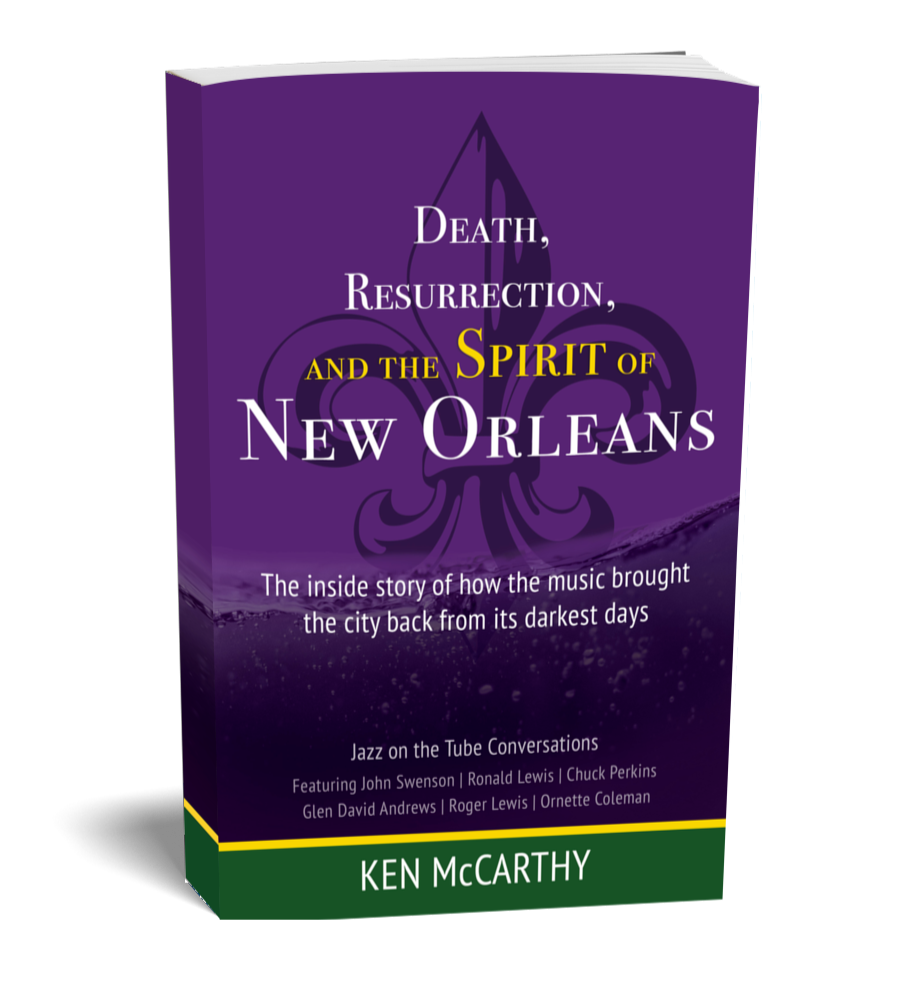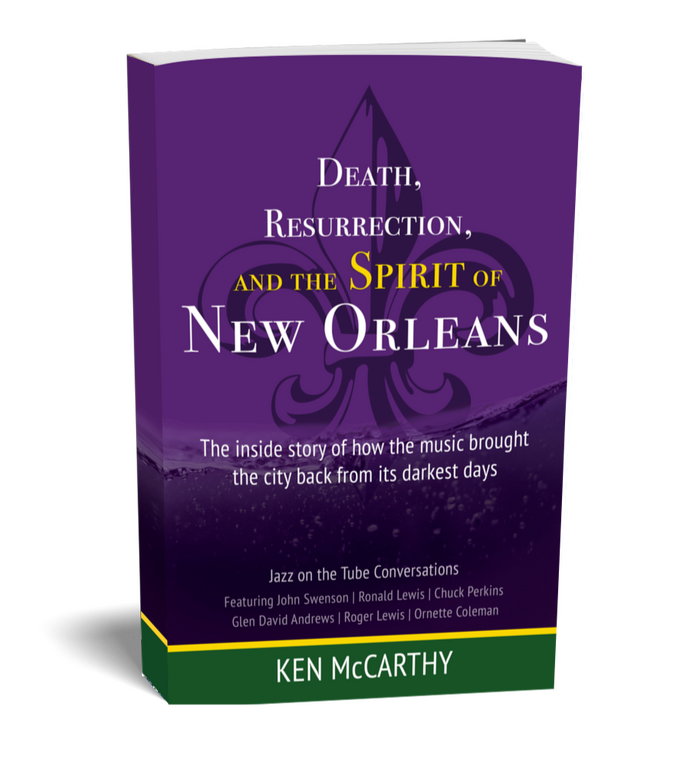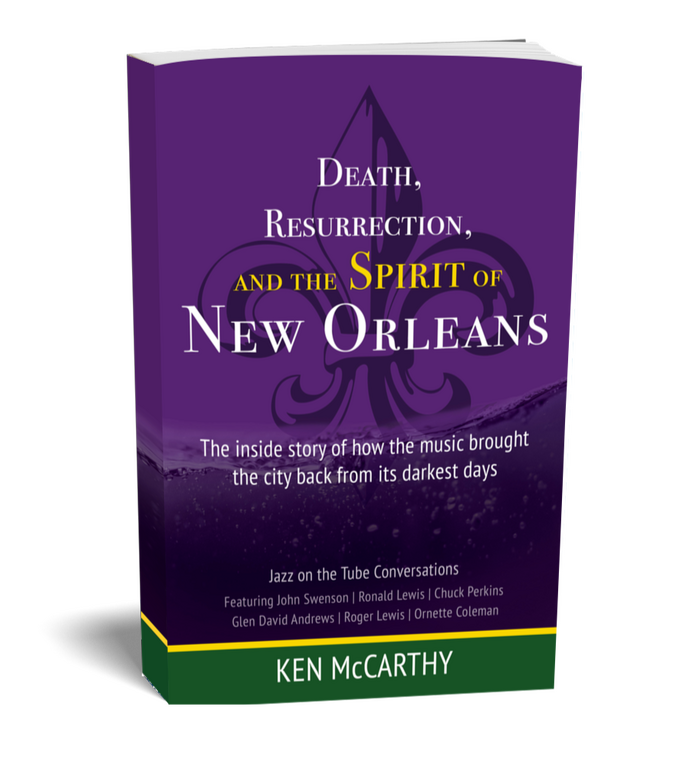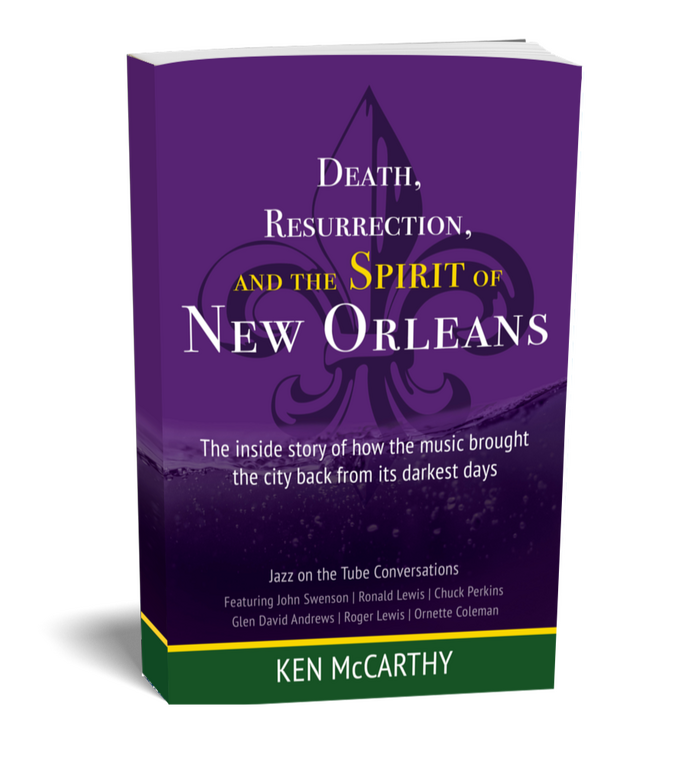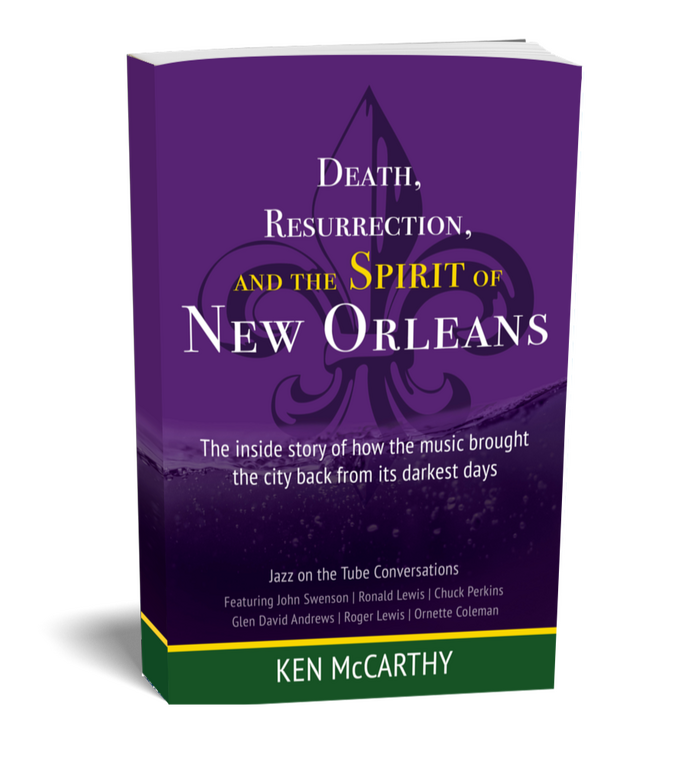Three ways to order
1: Paperback - Direct from publisher
2: PDF - Direct from publisher
3: Order from Amazon
NOLA Resources & Guide
Three ways to order
1: Paperback - Direct from publisher
2: PDF - Direct from publisher
3: Order from Amazon
Must See Places in NOLA
MuseumsTreme’s Petit Jazz Museum
1500 Governor Nicholls St
Proprietor: Al Jackson
TremeBackstreet Museum
1531 St Philip St
TremeMusic VenuesDBA
618 Frenchmen St
MarignyCafe Istanbul
2372 St Claude Ave Room 252
Marigny/7th Ward
Proprietor: Chuck Perkins
(Check for poetry nights.)CoffeehouseMojo’s Coffeehouse
1500 Magazine
Lower Garden DistrictOrientationHop-On and Hop-Off Tour BusIn an ideal world, you’d have a good friend who is a local to give you the lay of the land. Absent that, I recommend the “Hop-On-Hop-Off” bus tour.New Orleans is not a small town and it would take weeks, if not months, to sort it out on your own.The Hop-on and Hop-off bus takes you to many of the main points of interest in the city, in particular, these four:3 Esplanade Avenue Near St Peters Street & Ursulines Avenue – stop here for Farmers Market & Flea Market, Old US Mint – A Louisiana State Museum, and Frenchman Street Music Clubs.4 Tremé / Lafitte Rampart & Ursulines Avenue – Stop here for St Augustine Church & a short walk to Treme’s Petit Jazz Museum and the Backstreet Museum.5 Basin St. Station City Sightseeing Information Centre, St Louis Cemetery (when open), Armstrong Park & Congo Square.11 First of three stops on Magazine Street which is worth a stroll. This stop puts you close to the neighborhood I landed in when I first came to the city.
Three ways to order
1: Paperback - Direct from publisher
2: PDF - Direct from publisher
3: Order from Amazon
Getting Around NOLA
Most New Orleans neighborhoods are laid out like grids but the normal east-west-north-south orientation just does not apply.For example, “Uptown” is in the southwest part of the city, and “Downtown” is in the southeast. The city is big. You’re not going to be able to walk from end to end and even crossing some individual neighborhoods is a trek so taxis and Ubers are a must. A map is a must too, but even with one, it can be confusing.Here’s what you need to know:1. New Orleans lies between Lake Pontchartrain and the Mississippi River. As a visitor, you’re going spend your time in the neighborhoods close to the river.2. Historically, the big dividing line is Canal Street.In the old days what was left of Canal was the American side and what was right was the French side. No one talks about it this way now, but it’s a very helpful distinction.Right side of Canal you’ll find the older neighborhoods like the French Quarter, the Marigny, the Bywater, Treme, and the Upper and Lower Ninth Wards.Left side of Canal you’ll find the modern city with big office buildings and residential neighborhoods developed after the Americans took possession of the city like the Central Business District (CBD), the Warehouse District, the Garden District, Uptown, the Irish Channel, and Carrollton.3. The core of the city is a crescent, a half-circle, thus its nickname the Crescent City. From a getting-around-town perspective, I’ve always thought it’s best described as a half spiderweb.What this means in practical terms is if you are trying to get from a part of the city was left of Canal like Uptown or Carrollton to one that is right of Canal like the Bywater following the roads along the river – the fat part of the web – is the longest way to go. Better to go up one of the boulevards to Broad Avenue or Claiborne and across town that way (the short way) and then down the boulevard that best takes you to the neighborhood you want to go to.This may make no sense, but if for some reason you are doing your own driving in the city and have to make this trip often, you’ll thank me for this gas and time-saving “Obvious Adams” trick (which is not so obvious).4. Street names change when they cross Canal.Magazine on the “American” side becomes Decateur on the “French” side. Camp becomes Chartres. St. Charles becomes Royal. Carondelet becomes Bourbon. Baronne becomes Dauphine. O’Keefe becomes Burgundy.Rampart is called S. Rampart left of Canal and N. Rampart to the right of it.5. Major boundary roads for traveler neighborhoods include:On the “French” side:* Rampart – Divides the French Quarter from Treme* Esplanade – Divides the French Quarter from the Marigny* Franklin Ave – Just beyond St. Roche and Elysian Fields is the beginning of the BywaterOn the “American” side:* Strictly speaking, the area between Jackson and Louisiana is the Garden District but along Magazine and St. Charles, there is a lot of action, too.* From Louisiana to Carrollton is Uptown. It’s a big area and the major boulevards are Napoleon, Jefferson, and Carrollton which like Canal, Esplanade, and Franklin run to the river.This geographic “cheat sheet” along with a halfway decent map will save you a lot of time and trouble.When you get an address, the questions you want to answer are: a) what neighborhood it is in and b) what avenue or boulevard is it near. This will help orient you fast.
Three ways to order
1: Paperback - Direct from publisher
2: PDF - Direct from publisher
3: Order from Amazon
Audio & Video References from the Book
John Swenson(1) The Making of Glen David Andrews’ “Walking Through Heaven’s Gate.”(2) Helen Hill Funeral.(3) Dinneral Shavers in the 2006 Big Nine parade.(4) Glen David Andrews at the “Silence Is Violence rally” at City Hall, New Orleans. (2007).Bonus Videos:
(5) Smokey Johnson and Bob French talk about New Orleans drummers. At the Ponderosa Stomp. (2008).(6) “Farewell Spotted Cat – The Shout.”(7) “Defending the Mardi Gras Indians.”(8) “Eddie Bo at the Sound Café.” (2008)(9) “Aurora Nealand at the Spotted Cat.” (Fall 2006)Glen David Andrews
(1) Glen David Andrews at the “Silence Is Violence rally” at City Hall, New Orleans. (2007).(2) Glen David Andrews, “Easter Sunday Parking Lot Jam.” (2009) Filmed by Ken McCarthy.(3) The Making of Glen David Andrews’ “Walking Through Heaven’s Gate.”Ronald Lewis
“Chuck Perkins interviews Ronald Lewis.” - Part one“Chuck Perkins interviews Ronald Lewis.” - Part twoRoger Lewis
Jazz on the Tube: Roger Lewis and the Good News from New OrleansOrnette Coleman
(1) Jazz on the Tube: Ken McCarthy and Ornette Talk About New Orleans(2) Jazz on the Tube: Complete ‘Remembering Ornette’ Collection(3) Podcast: Matt Marble. The Black Hawk Chant – Mothers Leafy Anderson and Catherine Seals. Secret Sound.(4) Podcast: Mother Catherine Seals And The Temple Of The Innocent Blood(5) Podcast: The Legendary Lasties. TriPod: New Orleans at 300(6) Podcast: TriPod Xtras: Herlin Riley And Joe Lastie. TriPod: New Orleans at 300Levees.org
The Katrina Myth.Chuck Perkins
(1) Lil’ Liza Jane – Live at Chickie Wah Wah.(2) We Ain’t Dead Yet.(3) Congo Square.(4) Chuck Perkins in Liverpool and Manchester.(5) English Poet Grevel Lindop in New OrleansNew Orleans Musicians Clinic
Video appeal made for the New Orleans Musicians Clinic (2010).
Three ways to order
1: Paperback - Direct from publisher
2: PDF - Direct from publisher
3: Order from Amazon
Recommended Reading, Listening, and Viewing
Music and Poetry
Perkins, Chuck. A Lovesong For NOLA. 2012Documentaries
Tradition Is a Temple. A film by Darren Hoffman (2013).The City of a Million Dreams. A film by Jason Berry (2019).Books
(1) Swenson, John. New Atlantis, Musicians Battle for the Survival of New Orleans.(2) Lewis, Ronald. The House of Dance & Feathers.(3) Sullivan, Jack. New Orleans Remix.(4) Smtih, Michael. Spirit World: Pattern in the Expressive Folk Culture of New Orleans.(5) Rosenthal, Sandy. Words Whispered in Water.(6) Berry, Jason. Up from the Cradle of Jazz: New Orleans Music Since World War II.(7) Berry, Jason. The Spirit of Black Hawk: A Mystery of Africans and Indians.(8) Berry, Jason. City of a Million Dreams: A History of New Orleans at Year 300.(9) Kennedy, Al. Chord Changes on the Chalkboard: How Public School Teachers Shaped Jazz and the Music of New Orleans.
